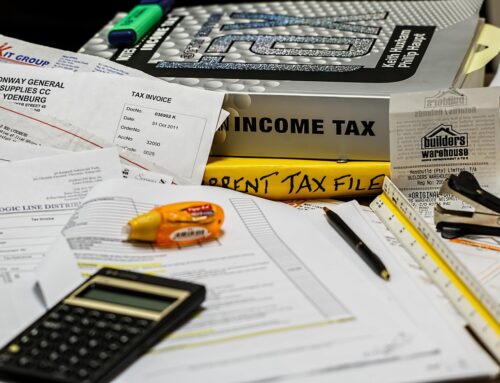This post is not about design. Is about getting ready to design.
Three times in the same week I was asked by three different clients to generate ideas for new features, to solve a specific problem or to improve results.
Although some of these requests were tied to a KPI, none were made in reference to a business goal. And this brought to mind the Natural, Unnatural and Reactive Planning Processes that David Allen describes in his book “Getting Things Done”.
It is always handy to have these three planning processes in mind so we can ask the right questions before we get ready to design a new product, a new feature, a solution to a problem or think of ways to improves results.
The Natural Planning Process
This is the process we unconsciously follow when we make everyday decisions, from planning an outing to buying a phone.
This planning process is comprised of 5 phases, but we go through them so fast that we don’t even realize there is a process.
- Purpose: why are we doing this? Which is closely tied to:
- Vision: what is the outcome we want? Can be described qualitatively or in the form of KPIs
- Ideas: the different options we have to fulfill our goal
- Structure: the plan we have for carrying out our goal
- Next action: the first step of the plan that makes our dreams come true
Let’s say I’m deciding the purchase of a phone:
- Purpose: the first thing I’d ask myself is “why do I want a new phone?”: because I need better performance? Because I need to have the latest technology? Let’s say it is the latter. Having a purpose acts as a natural filter for options and ideas. It is the frame within which we’ll make all subsequent decisions.
- Vision: since the intended outcome is to buy a phone with the latest technology I’ll only look at the newest models in the market from the most innovative companies, and ignore everything else.
- Ideas: given my goal, I’ll only look at Samsung and Apple, since I consider these companies to make the most cutting edge devices (just using these two companies as an example) and ignore everything else.
- Structure: I’ll go to each manufacturer’s website to gather the initial round of information and once I decide on a few models I’ll go to a store to play with the devices and see how they feel in my hand. After that, I’ll be ready to buy.
- Next action: go online to Apple’s (or Samsung’s) website.
The Unnatural Planning Process
As it turns out, as obvious and natural as this process is, it is not the way we normally plan our projects.
In real work life, we usually start our projects at stage 3 Ideas: we are asked to come up with new features for the product, improve the onboarding process, think of strategies to lure clients that haven’t made a purchase in so many weeks, or get ideas for that landing page to improve campaign results.
The danger of starting at phase 3 is that any idea is a good idea when you don’t take into account the goals and expected outcome. And you may even end up choosing an idea that is good on the whole (usually the sexiest one), but that is not so good when put in the context of the project’s goal.
The Reactive Planning Process
But it gets worse: sometimes, we are in such a hurry to see results that we jump right to phase 5 (start doing). The result: a lot of activity that gives us the illusion of progress but yields no results.
So we find ourselves in a mess and we think the problem is lack of planning and go up to stage 4 (structure), which will in turn take us to stage 3 (ideas) because that’s what we were asked to do in the first.
And before we know it, we are looping between phases 5, 4 and 3. Why? Because we are so busy getting something done that we forget to go back to the basics, which is tie our thinking to the goals and intended outcomes. And this, as we saw, gives us the necessary criteria and constraints to create and filter those new ideas or solutions we need to come up with.
It’s not a matter of whether but when
At some point, when we are either too anxious by the proverbial “blank page” or exhausted from so much doing, the question we should have asked in the first place pops up: “What is it that we want to achieve? What is the goal?”.
And we suddenly come to our senses and start at the top, stage 1 (purpose), and things start falling into place quickly. And we think “if we had done this from the start, we wouldn’t have wasted so much time/money/resources”.
So, just like what happens with idea/product/market validation (if you follow the lean process), “it’s not a matter of whether the natural planning will be done — just when, and at what cost”.
In his Ted Talk “Getting in control and creating space” you can get a summary of these three models, right from the source.
Photo credit: Balance From Within / Jacob Tonski (US) via Photopin. License.
This post is not about design. Is about getting ready to design.
Three times in the same week I was asked by three different clients to generate ideas for new features, to solve a specific problem or to improve results.
Although some of these requests were tied to a KPI, none were made in reference to a business goal. And this brought to mind the Natural, Unnatural and Reactive Planning Processes that David Allen describes in his book “Getting Things Done”.
It is always handy to have these three planning processes in mind so we can ask the right questions before we get ready to design a new product, a new feature, a solution to a problem or think of ways to improves results.
The Natural Planning Process
This is the process we unconsciously follow when we make everyday decisions, from planning an outing to buying a phone.
This planning process is comprised of 5 phases, but we go through them so fast that we don’t even realize there is a process.
- Purpose: why are we doing this? Which is closely tied to:
- Vision: what is the outcome we want? Can be described qualitatively or in the form of KPIs
- Ideas: the different options we have to fulfill our goal
- Structure: the plan we have for carrying out our goal
- Next action: the first step of the plan that makes our dreams come true
Let’s say I’m deciding the purchase of a phone:
- Purpose: the first thing I’d ask myself is “why do I want a new phone?”: because I need better performance? Because I need to have the latest technology? Let’s say it is the latter. Having a purpose acts as a natural filter for options and ideas. It is the frame within which we’ll make all subsequent decisions.
- Vision: since the intended outcome is to buy a phone with the latest technology I’ll only look at the newest models in the market from the most innovative companies, and ignore everything else.
- Ideas: given my goal, I’ll only look at Samsung and Apple, since I consider these companies to make the most cutting edge devices (just using these two companies as an example) and ignore everything else.
- Structure: I’ll go to each manufacturer’s website to gather the initial round of information and once I decide on a few models I’ll go to a store to play with the devices and see how they feel in my hand. After that, I’ll be ready to buy.
- Next action: go online to Apple’s (or Samsung’s) website.
The Unnatural Planning Process
As it turns out, as obvious and natural as this process is, it is not the way we normally plan our projects.
In real work life, we usually start our projects at stage 3 Ideas: we are asked to come up with new features for the product, improve the onboarding process, think of strategies to lure clients that haven’t made a purchase in so many weeks, or get ideas for that landing page to improve campaign results.
The danger of starting at phase 3 is that any idea is a good idea when you don’t take into account the goals and expected outcome. And you may even end up choosing an idea that is good on the whole (usually the sexiest one), but that is not so good when put in the context of the project’s goal.
The Reactive Planning Process
But it gets worse: sometimes, we are in such a hurry to see results that we jump right to phase 5 (start doing). The result: a lot of activity that gives us the illusion of progress but yields no results.
So we find ourselves in a mess and we think the problem is lack of planning and go up to stage 4 (structure), which will in turn take us to stage 3 (ideas) because that’s what we were asked to do in the first.
And before we know it, we are looping between phases 5, 4 and 3. Why? Because we are so busy getting something done that we forget to go back to the basics, which is tie our thinking to the goals and intended outcomes. And this, as we saw, gives us the necessary criteria and constraints to create and filter those new ideas or solutions we need to come up with.
It’s not a matter of whether but when
At some point, when we are either too anxious by the proverbial “blank page” or exhausted from so much doing, the question we should have asked in the first place pops up: “What is it that we want to achieve? What is the goal?”.
And we suddenly come to our senses and start at the top, stage 1 (purpose), and things start falling into place quickly. And we think “if we had done this from the start, we wouldn’t have wasted so much time/money/resources”.
So, just like what happens with idea/product/market validation (if you follow the lean process), “it’s not a matter of whether the natural planning will be done — just when, and at what cost”.
In his Ted Talk “Getting in control and creating space” you can get a summary of these three models, right from the source.
Photo credit: Balance From Within / Jacob Tonski (US) via Photopin. License.




